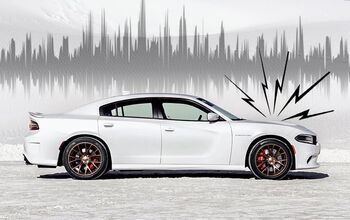Toyota is the Last Full-Line Car Company… and Here's Why That Matters

As you may have noticed, the AutoGuide team has accumulated a lot of miles in Toyotas this year.
Road Test Editor Kyle Patrick and I have driven up mountains and pitted the lovable little GR86 against other fun cars. Earlier this year, Kyle even drove a couple of hybrids to the Arctic… in the winter. Our latest adventure took us to Canada's most Eastern point to then kick off Toyota Canada's epic cross-country summer road trip in a variety of models. It’s all been a great way to share in Toyota Canada’s 60th Anniversary, or Kanreki as that milestone is known in Japan. The Kanreki is a time to reflect on past achievements, while planning for the future.
Despite conspiracy theorists suggesting we might be on the take, there’s a simpler (and less sinister) reason for all the Toyota time: it's the only remaining car company that has a full line of machines offered these days. This means as we’re brainstorming story ideas, regardless of the type of activity, adventure or test we concoct, there’s seemingly always a model in Toyota’s current line-up that meets the need, regardless of how absurd it might be. (That the company’s media relations folks are usually willing to indulge us, certainly helps, too).
As driving fanatics, that breadth of products matters since no other company has as many enthusiast-centric and everyday vehicles as Toyota. The three Gazoo Racing (GR) models may represent a miniscule number of actual sales—and an inconsequential contribution to Toyota’s bottom line—but they nevertheless cast a shine of excitement on the rest of the line-up. These three cars also appeal to a diverse group of drivers, with the GR86 appealing to driving purists of all ages seeking for a pure, simple sports car in the classic front-engine-rear-drive format. Meanwhile, the GR Corolla is a wild rally-car replica with its feisty 300-horsepower three-cylinder engine propelling the little all-wheel-drive hatchback to a different kind of fun. And the range-topping GR Supra remains one of the best traditional-format sports cars out there, thanks to aggressive styling, a seriously powerful straight-six under the hood, and the availability of a slick-shifting six-speed. These cars exist simply to make drivers grin ear-to-ear every time they’re driven.
Of course, each requires compromises from stiff suspensions and cramped cockpits, to somewhat pricey admission costs. The armchair critics reading this are surely shouting that the GR86 wouldn’t exist without Subaru, and the Supra’s heart beats with a BMW’s pulse. But that just means Toyota had the smarts to make partnerships that enabled these three low-volume sports car models to actually get built. Other companies are killing off enthusiast cars from their lineups, and if given the choice between driving the wickedly fun GR86 or GR Supra with their “parts-bin” mechanicals versus no sports car offerings at all, we’re happy to take these ‘half-breeds’ all day long. Remember, Toyota is also the company selling more stick-shift models than any other company.
Sure, there are excellent alternatives to each of the GR models, too, but not from one single company, and certainly not in a showroom that also offers a complete family of sedans, SUVs and pick-up trucks. Plus, all of this is to say nothing about the offerings from Toyota’s Lexus division, too.
Toyota’s enthusiast models also reach into the truck world. The Toyota Racing Development (TRD) brand has been affixed to various trucks and SUVs lately that appeal to a whole different group of driving enthusiasts. For those wanting to blast across the open desert for fun, a Tacoma TRD Pro could scratch that itch. The Tacoma and 4Runner have also become synonymous with overlanding fanatics who choose to drive as far away from civilization as possible and camp there, usually with a fancy tent stuck to the roof.
If all of this is starting to sound a bit too much like a love letter to Toyota, one has to admit that the company does command some respect for giving drivers of all types just what they’re looking for in a car, truck, minivan, or SUV. And even for those who wouldn’t drive a Toyota if their life depended on it, they should at least accept that Toyota’s efforts in so many different machines force competitors to work hard at making their own models better.
How and why Toyota is able to continue with such a full and diverse showroom stems from a couple of aspects. First, it’s the largest automobile manufacturer in the world, having sold more than 10 million units worldwide last year and reportedly sitting on coffers jammed with nearly 100 billion bucks. That sort of scale lets a company stretch into a full line-up to serve a very broad and global car-buying need.
It also means they can weather the storms of economic downturns and ride out the waves of consumer whims longer than some other manufacturers might feel comfortable doing. While North American tastes might’ve largely shifted away from cars to trucks and SUVs, prompting companies like Ford and GM to kill off their sedan offerings, Toyota’s cars continue to do well globally, meaning even as sales for the Camry and Corolla might not be what they once were here, they’re still a strong seller by nature of being one of the few sedan offerings left.
Toyota’s willingness to march to the beat of a different drummer comes from fundamental principles within the organization, too. The company’s global strategy is designed, in theory, to meet every customer need and provide a full line in every market. It seems an absurdly ambitious goal given the differing customer wants and needs in various, wildly diverse markets around the planet. Producing vehicles all over the world certainly helps Toyota meet the specific demands of local markets. Today, we largely take for granted that hundreds of thousands of new Toyotas roll off North American assembly lines every year, but here in Canada, Toyota has been building cars since 1968 – long before it started in the US – at the former Point Edward Plant in Nova Scotia. Fast-forward to the 2020s and Toyota is the number one producer of vehicles in Canada.
There’s a charming, long-held creed ingrained in Toyota’s corporate culture that owning a car helps make people happy. Toyota Value defines the company’s core tenets including the belief that they are “always optimizing to enhance the happiness of every customer as well as to build a better future for people, society, and the planet we share.” It’s a quaint thought, especially for a company designed to make profits as well as cars, but it seems to be reinforced by the dealer network (that, of course, also exists to turn a profit).
In speaking with Michelle Melendy, a dealer principal for multiple Eastern Canadian Toyota dealerships, along with a few competitive brands, she tells of the impressive communication Toyota corporate has with its dealers. It seems dealers have a stronger voice within Toyota to affect the direction of the company than they do with other brands. This front-line insight on product offerings and client feedback from within the individual communities the dealerships reside provides useful intel to the mother ship.
Long-time dealers like Michelle feel they have the complete backing of Toyota corporate, which can be especially helpful when dealing with widescale recalls like the ones Toyota has experienced in recent years. A well-supported dealer has the confidence to back the product even in the face of hardships, helps maintain strong relationships with customers, and maintains or increases loyalty. Those loyal customers consequently stick with the brand, and even as life dictates changing automotive needs, they should always be able to find something within Toyota’s broad line-up to suit those needs.
Toyota Canada is celebrating its 60th Anniversary this year as Toyota USA approaches its 70th. On both sides of the border, the growth since the mid-late twentieth century to today is impressive. For years its cars have been top sellers in North America, while it continues to expand its production output for multiple models at a growing number of manufacturing facilities. Toyota’s full line of cars and trucks are competitive in nearly every segment they compete, which is good news for fans of the brand, but it’s also good news for automotive consumers in general since competition breeds better products across the board. As enthusiasts of all types of cars and trucks, we appreciate it.
Become an AutoGuide insider. Get the latest from the automotive world first by subscribing to our newsletter here.

If there’s anything better than a good road trip through the desert, Jeff probably hasn’t heard of it. He’s got a propensity for buying less-than-perfect sports cars like a well-worn Boxster, an M Roadster and an MR2, but has applied a lifetime of passion to more than a dozen years of automotive and motorcycle reviews. He’s even collected several awards in the process including recognition for Best Automotive Review and Best Published Photography from the Automobile Journalists of Canada in 2023.
More by Jeff Wilson






















































Comments
Join the conversation